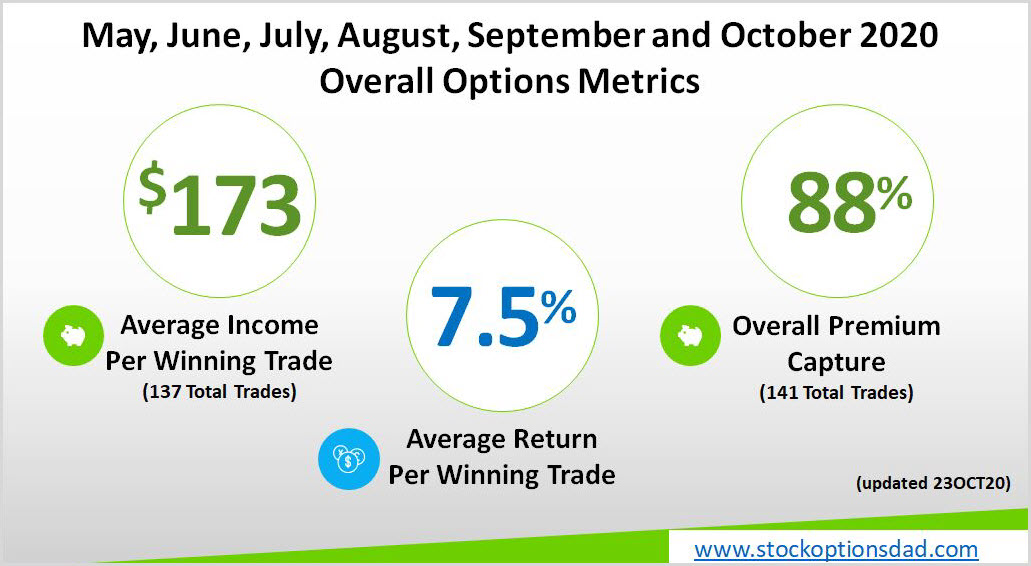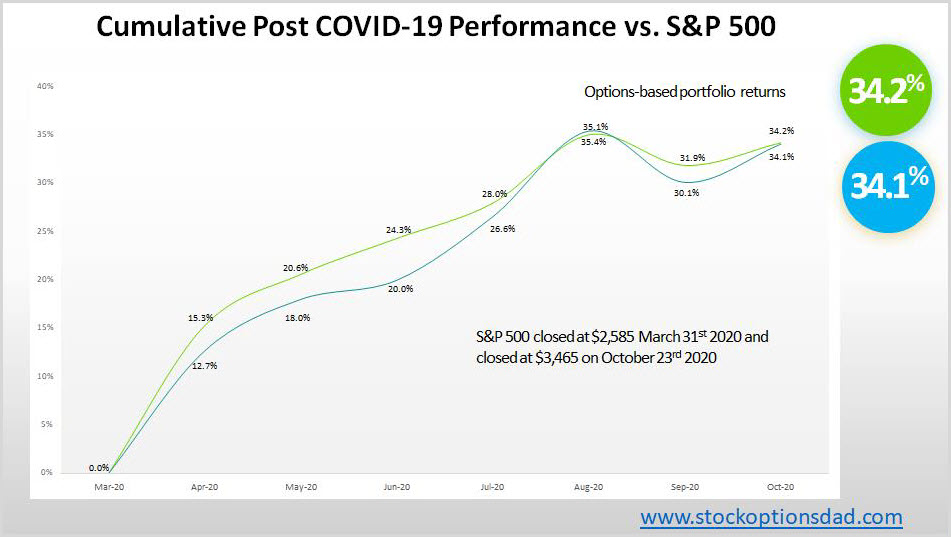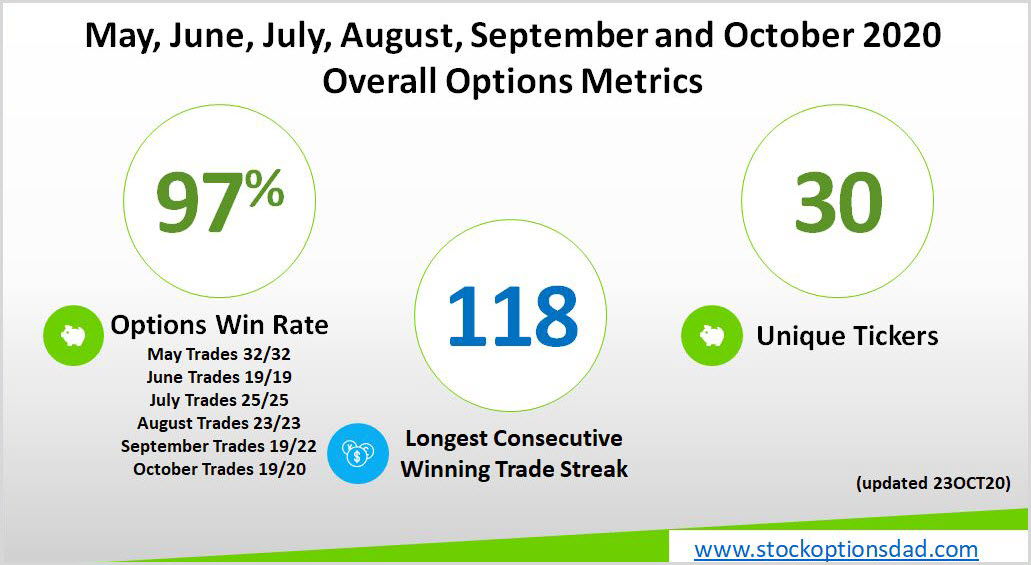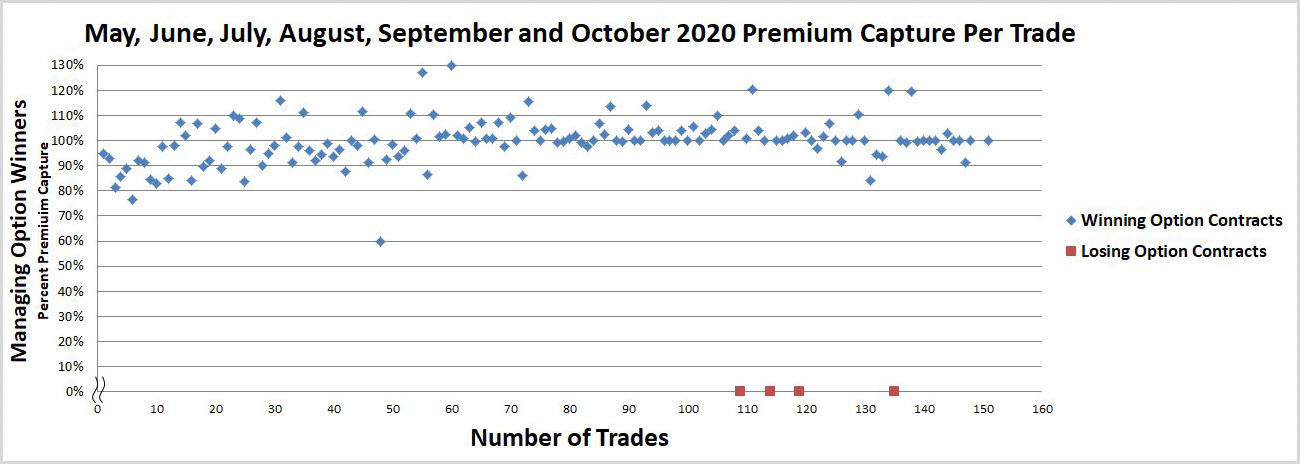The confluence of the impending U.S. Presidential election, rising COVID-19 cases domestically and abroad, and market dependency on stimulus measures give rise to a potentially volatile environment in November. Positioning your portfolio to be as agile as possible is essential when navigating these potentially volatile events. Cash on-hand, exposure to broad-based ETFs, and options is an ideal mix to achieve the portfolio agility required to mitigate uncertainty and volatility expansion.
Options trading at its core defines risk, leveraging a minimal amount of capital, and maximizing investment return. Proper portfolio construction is essential when engaging in options trading to drive portfolio results. This cash liquidity position provides portfolio agility to adjust when faced with extreme market conditions such as the September market correction rapidly.
An agile options based portfolio is essential to navigating these pockets of volatility. The recent September correction is a prime example of why maintaining liquidity is one of the many keys to an effective long term options strategy. In May, June, July, August, September, and October, 141 trades were placed and closed. An options win rate of 97% was achieved with an average ROI per trade of 7.5% and an overall option premium capture of 88% while outperforming the broader market despite the September correction (Figures 1 and 2).

Figure 1 – Overall option metrics from May 2020 – October 2020

Figure 2 – Smooth and consistent portfolio appreciation while matching the broader market gains and outperforming during the market sell-off in September. An overlay of an options/cash/long equity hybrid portfolio and the S&P 500 post-COVID-19. Even under the most bullish conditions, the hybrid portfolio outperformed the index with ~50% in cash.
Volatility Confluence – Election and CVOID-19
The impending U.S. presidential election, coupled with the rising cases of COVID-19, may be the volatility catalyst that disrupts this bull market. This election has shaped up to be one of the most contentious and polarizing elections ever. Regardless of the outcome, Facebook (FB) is preparing measures for possible election unrest. The company is planning on clamming election-related conflict in the U.S. via deploying tools in "at-risk" countries. These emergency measures were used in Sri Lanka, and Myanmar and the same tools have been queued up for the upcoming U.S. election.
Learn how to use options to supersize your portfolio returns with Trader Travis’ free training!
The U.S. has seen its highest ever number of COVID-19 cases as October comes to an end. The U.S. reported 79,852 and 83,757 in back-to-back days, the latter setting a new single-day record. Hospitalizations are also rising and have hit a two month high while deaths are also rising. Europe has witnessed a parabolic move in October, with France, U.K., Spain, Italy, and Germany being hit the hardest. France announced a daily record for COVID-19 cases with 52,000, while Europe's second wave of the pandemic is accelerating. Across Europe, some countries are imposing the toughest restrictions on its citizens that haven't been seen since March.
Positive Return Despite September Sell-Off
Since March, the September sell-off was the worst technology rout, while the Dow and S&P 500 posted four-week losing streaks, their longest losing stretches since August 2019. The Nasdaq had its first weekly gain in four weeks at the tail end of September. All the major indices sold off double-digits and into correction territory throughout September. This recent September correction provides an excellent opportunity to demonstrate the durability and resiliency of an options-based portfolio.
Despite the indices being in correction territory for September, following the 10 rules in options trading via leveraging small amounts of capital, defining risk, and maximizing returns has generated a positive return as it relates to the options portion of the portfolio. The positive options returns were in sharp contrast to the negative returns for the overall market. Generating consistent income without guessing which way the market will move with the probability of success in your favor has proven successful despite the September correction.
Results
Compared to the broader S&P 500 index, the blended options, long equity and cash portfolio have outperformed this index. In even the most bullish scenario post-COVID-19 lows where the markets erased all the declines inflicted by the pandemic, this approach has outperformed the S&P 500 by a narrow margin through 23OCT20 (Figure 2).
Overall, in May, June, July, August, September, and October, 121 trades were placed and closed. An options win rate of 98% was achieved with an average ROI per trade of 7.3% and an overall option premium capture of 90% while outperforming the broader market over the September downturn (Figures 2, 3, 4, and 5).

Figure 3 – Overall option metrics from May 2020 – October 2020

Figure 4 – ROI per trade over the past 121 trades

Figure 5 – Percent premium capture per trade over the last 121 trades
An Agile Options Strategy
Risk management is paramount when engaging in options trading. A slew of protective measures should be deployed if options are used as a means to drive portfolio results. When selling options and running an options-based portfolio, the following guidelines are essential:
-
1. Trade across a wide array of uncorrelated tickers
2. Maximize sector diversity
3. Spread option contracts over various expiration dates
4. Sell options in high implied volatility environments
5. Manage winning trades
6. Use defined-risk trades
7. Maintains a ~50% cash level
8. Maximize the number of trades, so the probabilities play out to the expected outcomes
9. Continue to trade through all market environments
10. Appropriate position sizing/trade allocation
Cash On-Hand
Holding ~50% cash as a protective measure is essential when faced with volatility expansion, such as the sharp double-digit decline observed in September. A cash position this high is possible because options are a leveraged vehicle; thus, minimal amounts of capital can be deployed to generate outsized gains with predictable outcomes. Even deploying all the protective measures outlined above won't offer the protection required during a black swan event. Cash is the safest way to immunize a portfolio from sharp market declines.
Maximizing Return on Capital
Risk-defined trades (i.e., put spreads, diagonal put spreads, and iron condors) maximizes the return on investment. Often, a double-digit realized gain over the course of a month-long contract is possible. Whether you have a small account or a large account, a defined risk (i.e., put spreads and diagonal put spreads) strategy enables you to leverage a minimal amount of capital, which opens the door to trading virtually any stock on the market. The required capital is equal to the maximum loss, while the maximum gain is equal to the option premium income received. Since the risk-defined approach has a max loss, the required capital is equivalent to the max loss.
Conclusion
The dual-threat of the upcoming election and resurgence of COVID-19 cases domestically and abroad are potential volatility events that investors should heed. The September correction reinforces why appropriate risk management is essential, especially with major events on the horizon. The overall options-based portfolio strategy is to sell options that enable you to collect premium income in a high-probability manner while generating consistent income for steady portfolio appreciation. An options-based approach provides a margin of safety while circumventing the impacts of drastic market moves and contains portfolio volatility.
Sticking to the core fundamentals of options trading, one can leverage small amounts of capital, define risk, and maximize investment return. Keeping an outsized portion of your portfolio in cash is essential to long-term success. Despite the indices being in correction territory for September, following the 10 rules in options trading has generated a positive return in the portfolio's options portion. The positive options returns were in sharp contrast to the negative returns for the overall market. This negative backdrop demonstrates an options-based portfolio's durability and resiliency to outperform during pockets of market turbulence. To this end, cash-on-hand, exposure to broad-based ETFs and options is an ideal mix to achieve the portfolio agility required to mitigate uncertainty and volatility expansion.
Thanks for reading,
The INO.com Team
Disclosure: The author holds shares in AAPL, AMZN, DIA, GOOGL, JPM, MSFT, QQQ, SPY and USO. The author has no business relationship with any companies mentioned in this article. This article is not intended to be a recommendation to buy or sell any stock or ETF mentioned.
